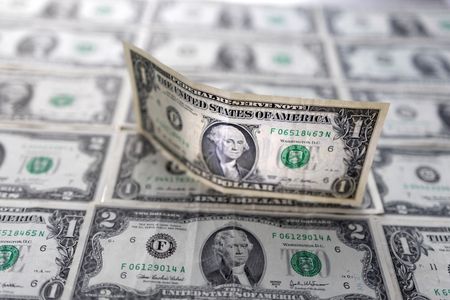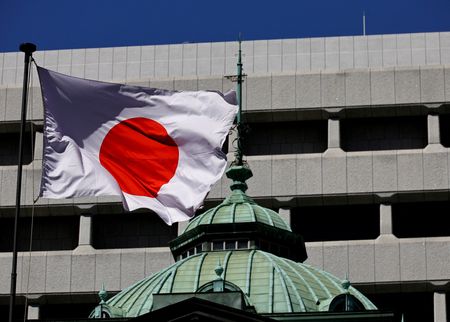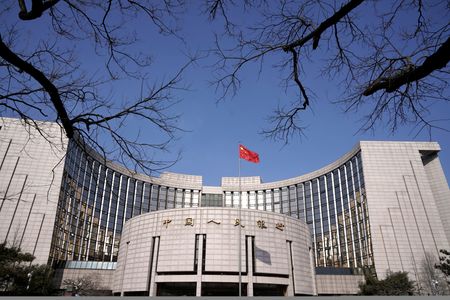By Ankur Banerjee
SINGAPORE (Reuters) -The U.S. dollar was steady on Friday, on course for a small weekly gain against major rivals as investors braced for delayed inflation data that is unlikely to deter the Federal Reserve from lowering interest rates next week.
Trade war worries were back on the agenda after U.S. President Donald Trump said all trade talks with Canada were terminated following what he called a fraudulent advertisement in which former President Ronald Reagan spoke negatively about tariffs.
The Canadian dollar eased a touch to 1.4015 per U.S. dollar in Asian hours, but market reaction overall was fairly subdued. Investor focus remains on the looming meeting between Trump and Chinese President Xi Jinping.
The meeting next week in South Korea has spurred some expectations of a resolution to the escalating trade war between the world’s top two economies.
“If President Trump’s meeting with President Putin is any guide, we expect at least some issues will remain unresolved,” said Joseph Capurso, head of international economics at the Commonwealth Bank of Australia.
“The best outcome is another trade truce in our view… We have low expectations of a positive outcome from the meeting. We judge market expectations are low too, implying only a modest reaction from currencies next week.”
US INFLATION DATA AT LAST
Investors are watching out for the U.S. Consumer Price Index (CPI) for September due later on Friday, expecting a 0.4% increase for the headline number and a 0.3% rise in the core figure month-on-month.
The U.S. Bureau of Labor Statistics said last week it would publish the inflation report despite the government shutdown – now in its fourth week – to assist the Social Security Administration with its annual cost-of-living adjustment for 2026 for millions of retirees and other benefits recipients.
While analysts do not expect the data to hinder the Fed’s path to cut rates next week by 25 basis points, it could provide cues on what the central bank might do in its December meeting.
Traders are almost fully pricing in a rate cut next week and another one at the December meeting.
“It would take a meaningful surprise to the upside for the market to change its mind about an additional interest rate cut by the Fed,” said Julien Lafargue, chief market strategist at Barclays Private Bank.
The euro was little changed at $1.160775 but on course for a nearly 0.3% drop for the week. Sterling was flat at $1.3331, headed for a 0.8% weekly decline.
The dollar index, which measures the U.S. currency against six other units, was set for a 0.37% rise for the week. It was last at 98.92.
TAKING STOCK OF NEW SANCTIONS
New U.S. sanctions on major Russian suppliers Rosneft and Lukoil over Russia’s war in Ukraine sent oil prices surging higher, following British sanctions on the same two companies last week.
That weighed on the currencies tied to oil imports including the yen. The yen’s fate is also tied to the policies of Japan’s new Prime Minister Sanae Takaichi, widely viewed as a fiscal and monetary dove.
The Japanese yen weakened to a two-week low and last fetched 152.90 per U.S. dollar. Data earlier on Friday showed Japan’s core consumer prices stayed above the central bank’s 2% target, keeping alive expectations of a near-term rate hike.
Takaichi is preparing an economic stimulus package that is likely to exceed last year’s $92 billion to help households tackle inflation, government sources familiar with the plan told Reuters on Wednesday.
That may prove to be a hurdle for the Bank of Japan to hike interest rates next week, with traders ascribing only a 19% chance of an increase.
“Given the Takaichi administration wants close coordination between the government and the BOJ, the BOJ may refrain from hiking interest rates until the economic package ordered by Takaichi has been passed through the parliament,” said CBA’s Capurso.
(Reporting by Ankur Banerjee in Singapore; Editing by Jamie Freed)











